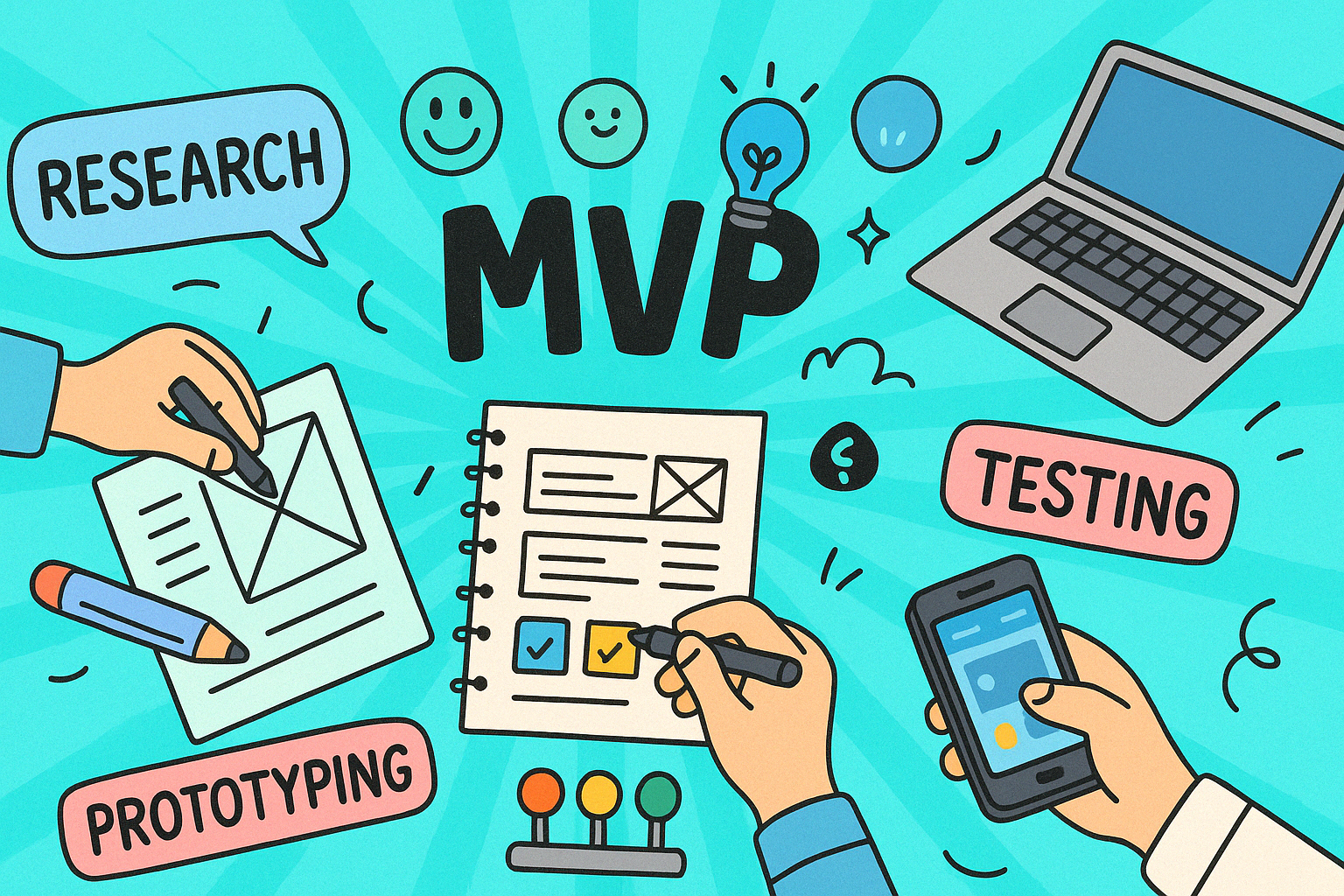Source: upsilonit
When people talk about creating a Minimum Viable Product (MVP), it’s often misunderstood as simply completing a list of tasks or features and releasing them into the market. But to truly call your product an MVP, it requires more than just ticking off a checklist. It’s about experimentation, feedback, and learning from real-world tests to refine your product over time.
Imagine you’re working on a project with 30 tasks. These tasks are predetermined by key decision-makers and agreed upon by all stakeholders. In this case, the focus shifts to completing and delivering the 30 tasks, rather than testing or experimenting to find out what the market truly needs. If your strategy involves releasing a product in stages say, only completing 10 tasks in the first phase then what you’ve created is not an MVP, but merely a first version of your product.
A true MVP is built around the concept of testing and learning, not simply executing a pre-determined plan. An MVP should follow the Build-Measure-Learn cycle, not the Build-Build-Build approach.

Source: Soyeon Lee
The Build-Measure-Learn Cycle: The Heart of MVP Development
The MVP process is best understood as a scientific experiment. In this context, your product is not just a product; it’s a hypothesis that you’re testing in the real world. The core idea is simple: start with a guess (or hypothesis), build a prototype or a version of your product, and then measure how well it performs in the market. The key here is learning from the results and using that insight to guide the next iteration.
This mindset aligns perfectly with the Lean Startup methodology, which encourages rapid prototyping and testing ideas with minimal resources before committing to full-scale development. The primary goal is to validate your hypotheses as quickly and inexpensively as possible, enabling you to make data-driven decisions for your next steps.
MVP in Practice: A Real-Life Example
Let’s take an example from everyday life to better understand MVP. A few years ago, I noticed a recurring issue while eating egg tarts. The crumbs would fall everywhere, leaving a mess on clothes and sticky fingers. Observing this, I hypothesized: What if we change the shape of the egg tart and enhance its packaging to address these issues? Could that encourage more people to buy them?
Instead of jumping straight into a large-scale production, I created a simple prototype: egg tarts in a different shape, wrapped in paper. This was my MVP. It wasn’t an elaborate website, app, or even a polished product; it was a simple test of a hypothesis. By testing this version with potential customers, I could learn whether the change would solve the problem or not.
In the same spirit, MVP doesn’t always have to be a website or an app. It could be something as simple as a landing page, an email, a prototype, or even a social media account like Instagram. The essence of MVP lies in testing whether your idea has potential in the real world without over-investing upfront.

Source: Soyeon Lee
Key Questions to Define Your MVP
If you’re building an MVP, you must be able to answer the following critical questions:
What problem are you trying to solve with your product? The foundation of any MVP is understanding the pain points or challenges your product will address.
What is the hypothesis you’re testing? This is the core idea or assumption that you want to validate through real-world feedback.
What kind of results or feedback do you need? Identifying the data points or insights you need will help you assess whether your MVP is effective or if changes are required.
In my egg tart example, when the bar-shaped tarts didn’t perform as expected, I learned that customers were still concerned with the messiness, but this time, they wanted an easier way to clean up the crumbs. In response, I pivoted and tested a new MVP, adding a wet tissue in the packaging. This iterative process of testing, learning, and adapting is what makes an MVP powerful.

Signs Your Product is Not a True MVP
It’s easy to fall into the trap of thinking that you’ve created an MVP just because you’ve built something, but true MVPs have specific characteristics. Here are some red flags that may indicate your product isn’t an MVP:
Rigid Plans with No Flexibility: If your project is set in stone with no room to adapt, you’re likely not following an MVP approach.
Top-Down Decision Making: If all decisions are made by upper management with no input from the team, you’re missing valuable insights from those on the ground.
Mistakes Are Not Embraced: MVPs require learning from failure, but if your culture punishes mistakes instead of using them as stepping stones for improvement, you’re not building the right mindset.
Focus on Building Rather than Learning: If your focus is solely on building the product without taking the time to test and learn, you’re building a product, not an MVP.
Gut Feeling Over Data: Decisions based on subjective opinions, rather than customer feedback or data, can derail your MVP process.
Constantly Changing Goals: If the scope of the project keeps changing with new features being added without validation, you might be moving away from the true MVP approach.
Misuse of Agile and MVP Terminology: Just because a project is broken down into phases doesn’t mean it’s agile or that it’s an MVP. Agile methodologies are about flexibility, but not all projects require an MVP, and sometimes calling something an MVP when it’s not can create confusion.
Understanding the Limits of the Lean Startup Approach
It’s important to note that the Lean Startup method is not one-size-fits-all. Some projects, especially those in more regulated industries or with fixed requirements, may need to take a more structured approach. In such cases, terms like “alpha version,” “proof of concept,” or “pilot” may be more appropriate than “MVP.”
The key is to accurately define the work you’re doing and communicate it clearly. Misusing MVP terminology can lead to misunderstandings and wasted efforts. A true MVP is a product that is developed with the intent to learn not to build a final product, but to gather enough information to iterate, pivot, and eventually arrive at a product that truly meets market needs.
The MVP as Your Launchpad for Success
Building a successful MVP is about adopting a mindset of experimentation and learning. It’s about taking calculated risks, testing assumptions, and using feedback to refine your product. The Lean Startup approach isn’t just about building something quickly; it’s about creating the most effective, efficient test for your ideas.
By embracing the MVP process, you can make informed decisions, minimize waste, and build products that actually solve problems. Remember, the goal isn’t just to create a product; it’s to learn, iterate, and improve. By doing so, you’ll be on the right track to building something that has the potential to thrive in the market.





